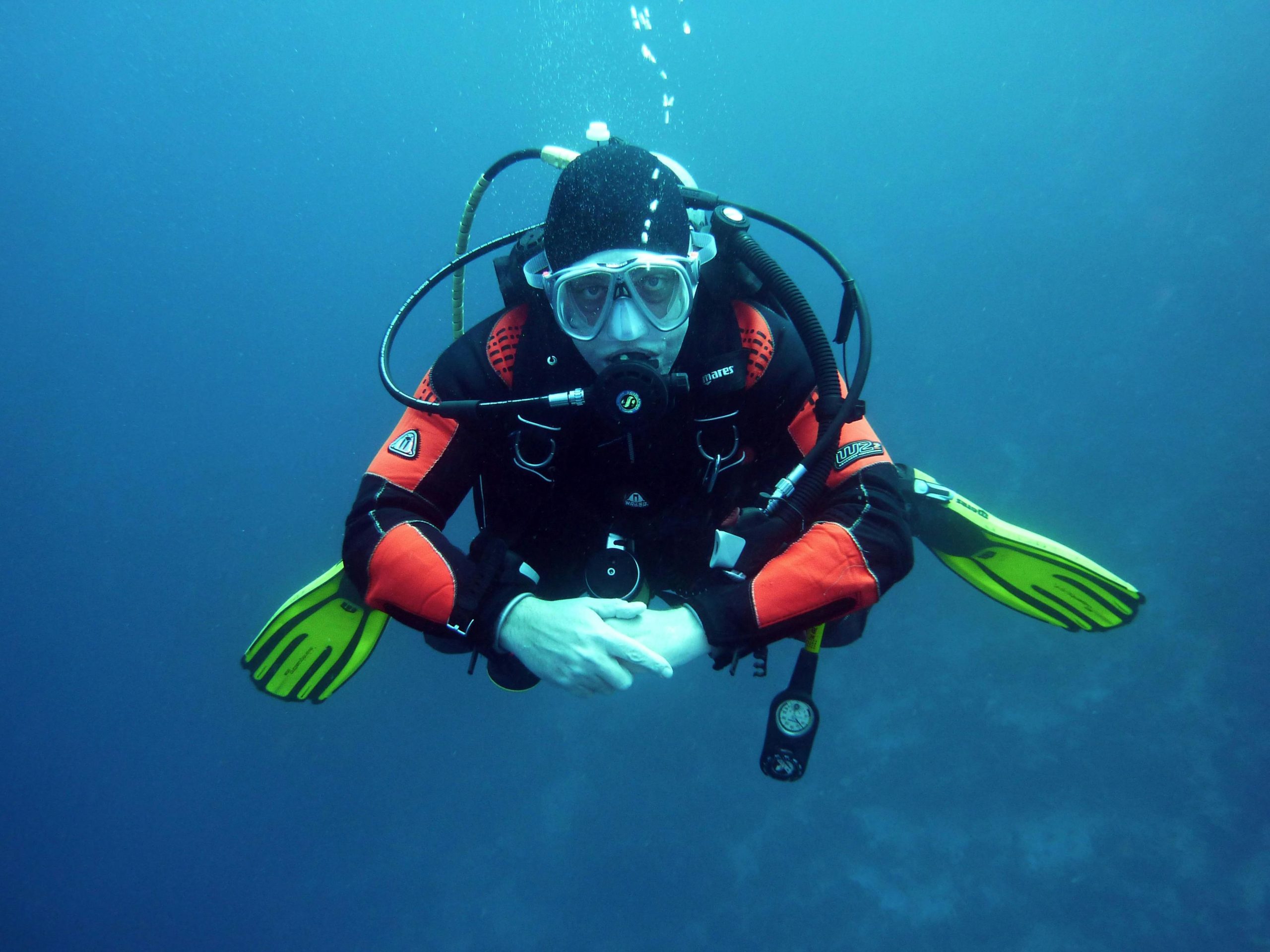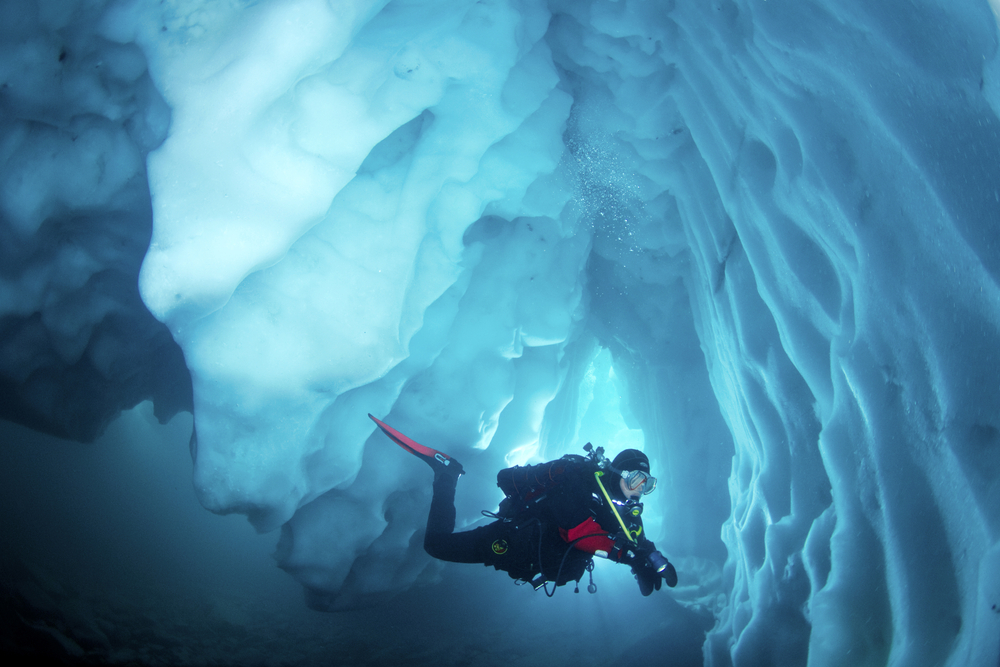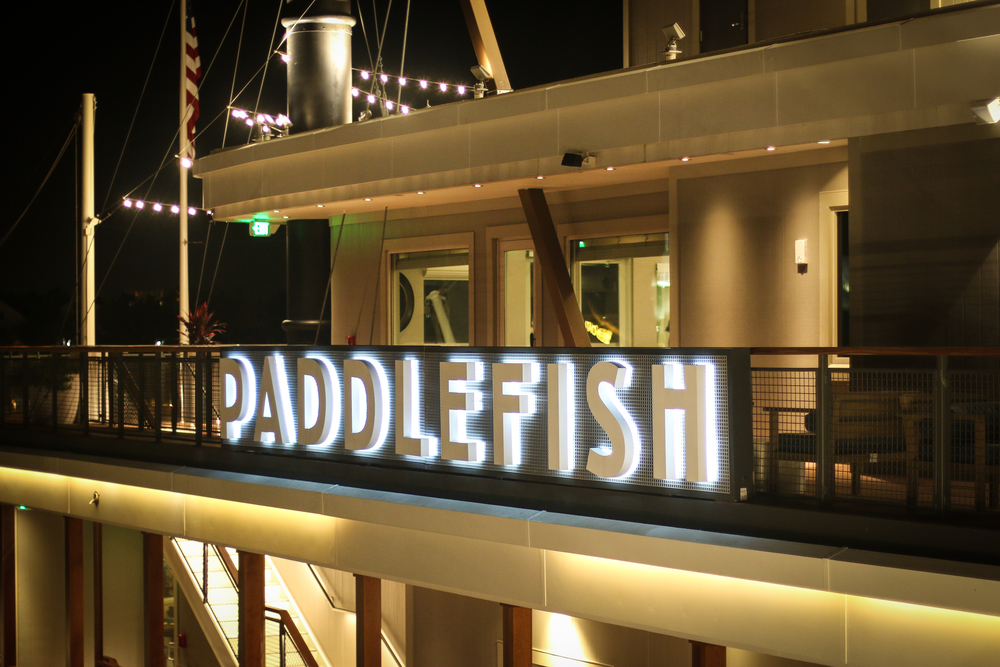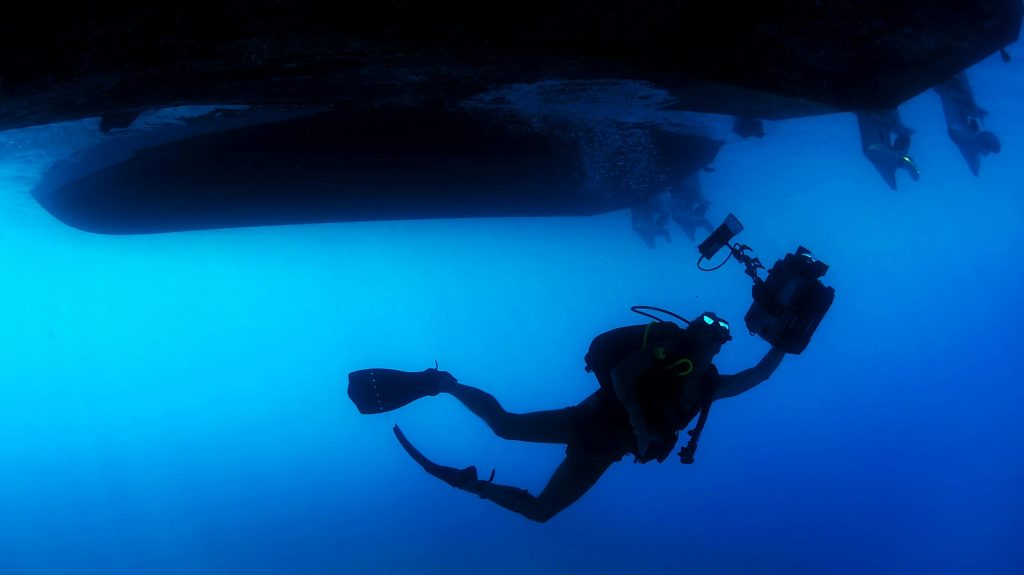Your cart is currently empty!
Man Dressed in Scuba Gear Accused of Robbing Disney Springs Restaurant and Then Swimming Away

In the early hours of a Monday morning, a crime unfolded at Disney Springs that seemed better suited to the opening scene of a blockbuster heist film than a sheriff’s office press release. Just after midnight, an unidentified man in scuba gear infiltrated Paddlefish, the steamboat-style restaurant anchored along the waterfront, and walked into the manager’s office where staff were finishing the nightly task of counting thousands in cash. Within minutes, the intruder had forced employees to the corner, ordered them to shut their eyes, and made off with between $10,000 and $20,000. What followed was a getaway so bizarre that it has left authorities and the public both amused and unsettled: he returned to his scuba gear, suited up, and swam off into the darkness of the lagoon.
The robbery has captivated attention not only for its surreal details but also because it managed to penetrate one of the most tightly secured entertainment complexes in the world. Disney Springs is famed for its constant surveillance, uniformed and undercover security, and partnership with local law enforcement. Yet here, amid the controlled magic of Walt Disney World, a masked man slipped into the water and vanished. Social media has transformed him into an instant figure of folklore dubbed everything from “The Phantom of the Lagoon” to “Florida’s Aquaman.” But behind the memes and incredulity lies a more serious story about vulnerabilities in seemingly impenetrable environments, the psychology of crime, and the unsettling reality for the employees caught in the middle.
The Midnight Intruder
The timeline of events paints a picture of precision combined with startling audacity. According to the Orange County Sheriff’s Office, the suspect entered Paddlefish just after midnight. Two employees were inside the manager’s office counting the evening’s cash deposits a vulnerable window that many restaurants share. Dressed in tight black clothing, a blue beanie, reflective goggles, and gloves, the robber stepped into the room with an intimidating presence. He didn’t brandish a gun or knife. Instead, he relied on shock, control, and the sheer absurdity of his outfit. Witnesses said he ordered the staff to face the corner and close their eyes, with some reports suggesting he tied them up briefly before gathering the bundles of cash. Within less than two minutes, he was gone, leaving behind only shaken employees and the surreal image of a scuba-suited thief.

Authorities later confirmed that the man appeared to spray paint at least one security camera, an act suggesting forethought but also betraying a certain clumsiness. While tampering with cameras may obscure a lens temporarily, it is not a sophisticated tactic and often leaves fingerprints or other traces. The suspect’s confidence, however, came from something other than technical expertise. He knew when to strike, how to create psychological dominance without violence, and where to escape. The cash haul estimated at up to $20,000 was significant but not so large that it required elaborate handling. The brevity of the incident and its theatricality underscore how quickly vulnerability can be exploited, even in a place synonymous with control.
A Bizarre Escape by Water
The most remarkable element of the crime was the getaway. Deputies believe the suspect stashed his scuba gear nearby before entering the restaurant, then retrieved it once the robbery was complete. Donning wetsuit, mask, and oxygen tank, he is said to have leapt into the lagoon surrounding Paddlefish and vanished beneath the water. Law enforcement mounted an immediate search using patrol boats, helicopters, and shoreline sweeps. Yet despite these efforts, no sign of the thief emerged. No bubbles marked his path. No discarded gear floated to the surface. The lagoon, typically a scenic backdrop for tourists, became an accomplice in his escape.
This method of retreat may sound comedic, but in practice it offered genuine tactical advantages. Waterways are notoriously difficult to secure. Security cameras can cover parking lots and entry points, but lakes at night create shadows and blind spots. Motion sensors often fail to detect submerged movement, and most patrols are not trained for aquatic pursuit. In essence, the robber found an invisible highway in plain sight. The lagoon’s dark waters concealed him better than any getaway car could have, and in the critical first minutes after the crime, those few moments of invisibility were enough to outwit authorities. The risk, however, was extreme. Florida’s waters are known for unpredictable conditions and the presence of wildlife like alligators. The suspect gambled not only with capture but also with his own safety. That gamble paid off.
Planning or Pure Opportunism?

The robbery reveals a strange mix of planning and recklessness. On one hand, the suspect appeared to know Paddlefish’s cash-counting routine and the positioning of its surveillance cameras. He struck at exactly the right moment, indicating either thorough reconnaissance or possible inside knowledge. Stashing scuba equipment ahead of time further demonstrates premeditation. On the other hand, spray-painting cameras is a crude technique, and confronting staff face-to-face rather than relying on stealth increased the risk of resistance or alarm. If this was a seasoned criminal, his methods were surprisingly clunky. If it was an opportunist, his daring was astonishing.
Criminal analysts point to the psychological dimensions of the heist. The choice of scuba gear was not just functional; it was theatrical. A masked intruder in reflective goggles and wetsuit creates instant intimidation because it disrupts expectations. Employees likely hesitated, unsure whether to treat the scene as a prank or a real threat, which gave the suspect control. That mix of absurdity and menace was enough to suppress resistance in the crucial moments. Whether this was a one-off stunt or the work of someone prepared to strike again is unknown, but the symbolism of the crime has already entered Florida’s long catalog of bizarre criminal lore.
Paddlefish: A Landmark With a Strange New Chapter

The backdrop of this incident adds weight to its strangeness. Paddlefish is no ordinary restaurant. Originally launched in 1977 as the Empress Lilly named after Walt Disney’s wife the steamboat-shaped eatery has long been a staple of Disney Springs. Over the decades it has evolved from Fulton’s Crab House to today’s Paddlefish, but it remains one of the area’s most recognizable landmarks. That a crime of this nature occurred there, in the heart of a highly monitored entertainment district, is startling. The steamboat is supposed to evoke nostalgia and charm, not headlines about masked thieves.
Disney Springs itself is a controlled environment with robust security. Uniformed officers, undercover security, and extensive camera networks create an atmosphere where guests are meant to feel safe. For visitors enjoying lobster rolls and cocktails, the idea that a man could swim up in scuba gear, rob the restaurant, and swim away undetected is almost unthinkable. Yet that is precisely what occurred. For Disney, the robbery is an uncomfortable reminder that no system is infallible. For the public, it is a striking juxtaposition the “Most Magical Place on Earth” interrupted by a crime that feels like parody. The incident has already begun to shift perceptions about how impenetrable such spaces truly are.
The Human Impact and the Rapid Return to Normal

Amid the memes and headlines, the employees at the center of the robbery remain the most affected. Being ordered into a corner by a masked man is traumatic, even without physical harm. Law enforcement emphasized that no weapons were used, and the workers were unharmed, but psychological distress cannot be discounted. These employees were performing routine duties in what they believed was a safe environment. The intrusion shattered that sense of security. Returning to work the next day in the same office, after such a confrontation, carries invisible burdens.
Yet within hours of the robbery, Paddlefish was open for business. Guests arriving for lunch had no indication that the restaurant had been the site of a crime the night before. There was no visible increase in security or disruption to operations. For Disney, maintaining a seamless guest experience is paramount, and resuming normalcy quickly was likely a deliberate choice. But for the staff, that rapid transition may feel jarring. Without time to process or support structures like counseling, the trauma can linger. The swift return to business highlights the tension between corporate image and employee well-being.
Security Lessons From the Lagoon

The scuba heist has already sparked conversations among security experts. The incident underscores how even highly controlled environments have vulnerabilities. Waterways, in particular, present unique challenges. Unlike walkways or parking areas, they are difficult to monitor comprehensively. Specialized tools such as thermal imaging cameras, sonar detection, or infrared sensors may help, but they are costly and not standard in most entertainment districts. Disney’s emphasis has long been on guest experience and visual appeal, not militarized surveillance, and the lagoon was designed to charm, not defend.
For property managers, the robbery highlights the importance of reviewing cash-handling procedures. Varying the times when money is counted, using secure transfer methods, and minimizing exposure windows can reduce opportunities for crime. Training employees in handling coercive situations, and ensuring access to silent alarms or safe-room protocols, are additional safeguards. Perhaps most importantly, businesses must support staff in the aftermath, acknowledging trauma rather than minimizing it in the rush to reopen. The scuba heist, while surreal, is a reminder that preparedness for the unexpected is as crucial as defenses against the obvious.
Reflections and Lessons
The scuba heist at Disney Springs is more than a quirky viral headline. It is a study in how creativity can be turned toward destructive ends, how vulnerabilities exist even in the most controlled environments, and how public perception of crime can be warped by humor. For Disney, it is a call to reassess security measures without undermining the guest experience. For law enforcement, it is a reminder that unconventional escapes require unconventional preparedness. And for the public, it is both a story to laugh about and one to reflect on.
Ultimately, the image of a man vanishing into dark waters with bundles of cash underlines an enduring truth: reality is often stranger than fiction. In a place built to craft magical stories, one unfolded that Disney would never script a story of ingenuity, absurdity, and vulnerability. Whether the thief is ever unmasked or not, his midnight swim will linger in memory as one of Florida’s strangest crimes, a reminder that beneath the surface of even the safest spaces, unpredictability waits.
The scuba heist at Disney Springs has left more than just unanswered questions and viral memes; it has carved out a peculiar space in Florida’s long history of strange crimes. It is a tale that forces both Disney and law enforcement to rethink vulnerabilities, and it challenges the public to see beyond the comedic imagery of goggles and wetsuits. Beneath the humor lies the reality of shaken employees, stolen money, and the unnerving truth that even the most secure environments can be breached by imagination and daring. The suspect may never be caught, but his bizarre midnight swim has already earned a place in local lore a reminder that reality often outpaces fiction in both absurdity and audacity.
